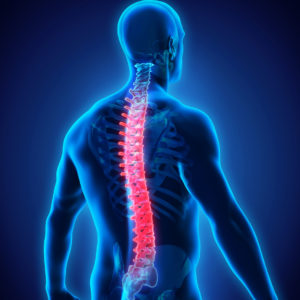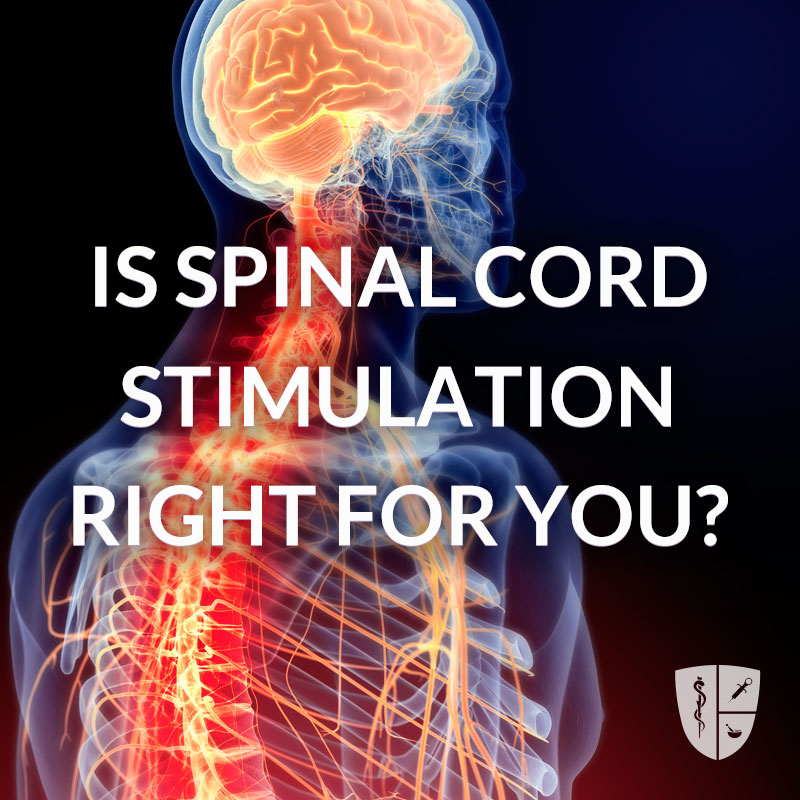
Utilizing Stimulation As a Way to Help Treat Chronic Pain
By Harrison Irons, MD
At this point nearly every American, especially anyone in the medical community, has heard about the opioid crisis we are currently facing. With increasing scrutiny from governing bodies at the national and state level regarding opioids, pain physicians are tested in treating patients in the already challenging chronic pain population. While non-opioid medications, therapy, and procedures have their place in treating chronic pain, what are physicians to do when patients fail all of these options and opioid medications? One option to consider is the spinal cord and peripheral nerve stimulation.
Spinal cord stimulation has been around for decades, but much like the technology in cell phones, the improvements in this industry have been vast over the last several years. Spinal cord stimulation is a modality traditionally used to treat pain in the low back and legs after lumbar surgery. It can also be used to treat pain in the neck and arms. It can be employed for patients who have failed medication, injections, therapy, and surgery. It involves the placement of two electrodes in the epidural space that connects to a battery about the size of a pacemaker. Energy is sent from the battery to the metallic contacts on the wires to modulate the way pain signals are transmitted through the spinal cord to the brain. The best part about a spinal cord stimulator is that a trial period is used to assess a patient’s response to the therapy. A patient has about 7 days to try out the therapy before moving to a permanent implant, which is advantageous and unique to this field of medicine. Prior to recent advances in technology the success rate of spinal cord stimulation was about 50% of patients received 50% or more pain relief. Now we are fortunately seeing about 80% of patients receive 80% pain relief or more.
Nerve stimulation is not only limited to the dorsal column of the spinal cord. Peripheral stimulation has been utilized for a long time, but due to changes in insurance, it was no longer getting covered several years ago. Thankfully these restrictions have been lifted and peripheral stimulation is now back and better than ever. Peripheral nerve stimulation worked very well but had some downfalls. One of the bigger ones was pain surrounding the battery or implanted pulse generator (IPG). With spinal cord stimulation, there is typically ample tissue in the low back or flank to implant the IPG, but with peripheral stimulation, the distance from the lead to the IPG was limited forcing physicians to place IPGs in more sensitive areas on the extremities.
Fortunately, there is new technology that has hit the market offering wireless stimulation options. Patients no longer have to worry about unsightly or painful IPG. The leads that are used to either stimulate the dorsal column of the spinal cord or a peripheral nerve wirelessly communicate to a battery pack. A patient simply wears a battery pack on their person that lasts roughly 24-48 hours, which is comparable to the battery life of a cell phone. In regards to peripheral stimulation, this technology can be used to treat pain all over the body that is typically difficult to treat using traditional interventional pain procedures such as pain in the: shoulder, hand, abdomen, pelvic area, knee, and feet to name a few.
As a medical community, we do our best in treating our patients with the tools in our toolbox. With increasingly stricter rules we must start to think outside the box in treating pain. Keep spinal cord and peripheral nerve stimulation in mind when treating your patients.

Further reading:
“Wireless Neuromodulation in the Management of Chronic Refractory FBSS Back Pain: Preliminary Prospective Experience with Different Stimulation Targets and Waveforms.” Perryman, Laura. Anesthesia & Perioperative Management Journal. 2018 2: 003.
“Wireless Neuromodulation By A Minimally Invasive Technique For Chronic Refractory Pain. Report of Preliminary Observations.” Billet, Bart. Medial Research Archives, Vol 5, Issue 8, August 2017.



